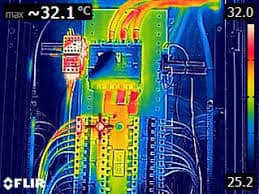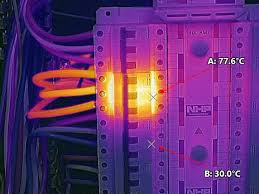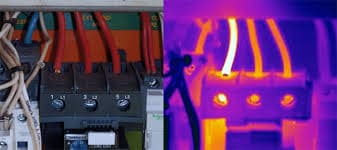THERMAL IMAGING
Thermal imaging, or thermography, is a non-invasive diagnostic technique that uses specialized cameras to detect and visualize temperature variations in electrical systems,revealing potential issues like overheating, loose connections, or overloaded circuits that are invisible to the naked eye. This method is crucial for predictive maintenance, preventing equipment failure, identifying safety hazards like electrical arcing, and avoiding costly repairs and downtime in electrical infrastructure.
How it works:
- Thermal imaging cameras capture infrared radiation emitted by objects, translating this heat energy into a visible image where different temperatures are represented by distinct color gradients.
- Areas that are hotter than normal indicate potential problems such as resistance in connections, overloaded circuits, or failing components.
- Advanced models may combine infrared and visible light images (e.g., IR-Fusion) for enhanced detail and easier identification of issues.
Benefits in electrical inspections:
- Early fault detection:Thermal imaging can pinpoint issues like loose connections, worn and corroded connections, overheating cables or motors, and overloaded circuits before they lead to serious damage or fire hazards.
- Preventative maintenance:By identifying problems early, it allows for planned repairs, minimizing unexpected breakdowns and optimizing maintenance schedules.
- Safety:It helps identify potential safety hazards, including electrical arcing and overheating components, thereby reducing the risk of fires and accidents.
- Cost savings:Early detection and repair of issues can prevent expensive replacements, reduce energy waste through identifying heat loss, and avoid costly downtime.
Frequency of inspections:
- While there’s no legal requirement for regular electrical thermal scanning in Australia, a scan is recommended every 2-3 years for office buildings and annually for manufacturing sites due to higher power usage.
- Using software to track measurements over time helps monitor the performance of electrical systems.



